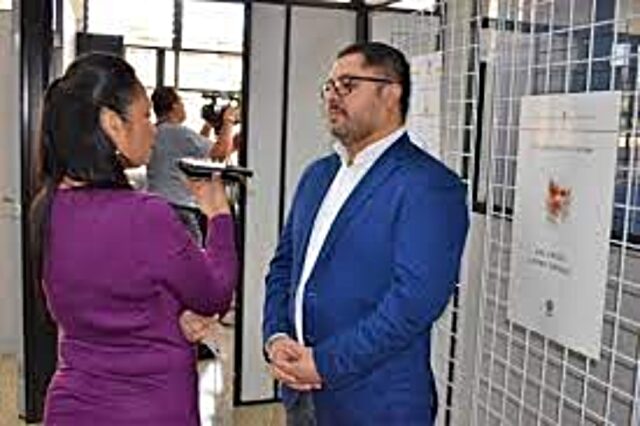Marco Hernández Solano, from Santa María de Dota, attributes achievement to education received in Costa Rica and his passion for hard work. The American newspaper The New York Times announced this past Friday that the Costa Rican Marco Hernández Solano, 37, a native of Santa María de Dota, as its new chief graphic editor.
“We are pleased to announce that Marco Hernandez is joining The Times as a graphics editor. He most recently worked as a data visualization developer at Reuters in Singapore, where he covered everything from the Kabul evacuation to the wildfires, the rescue of a Chinese mining company, and the Beirut explosion. Also, he visualized the enormous quantity of plastic bottles sold and it drew the map of the epic journey of a huge iceberg”, expressed the publication when presenting it to the readers.
Hernández grew up in Santa María de Dota (San José) where he graduated from the José Daniel Flores Zavaleta Professional Technical College. International globetrotter, his heart is anchored in that community and in Costa Rica, where he claims to have his roots by expressing his satisfaction for this work achievement that made him and his family move from Singapore to New York.
“The support of my family has always been very important, I am grateful that wherever life will take us, that I always had a great attitude from them regardless of whether it was in Dota, San José, Hong Kong, Singapore or New York, as on this occasion,” said Hernández. Since then, he has accumulated a long history of awards, moves around the planet and an abundance of work.
Hernández, his wife Eilyn Gamboa Cordero, and their son Mathias moved to Hong Kong, where he worked at the South China Morning Post as director of digital design for four years. He subsequently accepted an offer from the Reuters news agency in Singapore in 2019 for three years.
Just as he was getting there, The New York Times first contacted to lure him in. However, the invitation came when he was just arriving in Singapore and at the beginning of his time at Reuters, for which he declined, judging it inappropriate with his new employers and his family.
“With all the pain in my soul, I told them no. For me it was a closed window. I continued with mine, because I did not think it possible that another approach would come and my circumstance with Reuters was very good. I felt a little sad before a great opportunity, but in Reuters it was all very profitable and with the awards received”, he explained. However, the New York publication insisted between 2019 and 2020 until the hiring matured in 2021.
Stories with visual potential

As part of his new role in New York, Hernández must seek out stories with visual potential so that they can be presented to readers with visual data and interpretations.
According to his own account, his work dictates “putting on and taking off different tasks” as the story dictates. On the one hand, it will be to draw what the story will be like, on the other, carry out programming, talk with information sources or review large data deposits. According to each step, other tasks will come.
All the work, he adds, is multidisciplinary and falls to a single unit responsible for ensuring that each visual story makes sense and is differentiated from other press media.
“We can cover the same story, but putting different disciplines together makes them different. As an editor, it will be the stories that tell how many people will be involved. Sometimes it will be three, but it can be 15 or 20 as necessary,” he explained. The Tico added that the department to which he joins is made up of 40 people who occupy an entire floor of the New York Times Building in Manhattan.
Education in Costa Rica
Those who have known Hernández know that his calmness and humility only rivals his love for his family and his work. However, when asked what he would attribute his accomplishments to date, Hernández admits to transparent and direct answers.
“My professional education is all Costa Rican. Indeed, I developed skills and added studies in Asia and Europe while making my own path, but I can say that my vocational essence is due to the public and private university classrooms of Costa Rica”, says this graduate from the University of Sciences and Art in Barrio Luján, where he later taught classes as well.
He claims to be convinced that the educational system in Costa Rica is very good even though it can improve. However, from his perspective, the professional future of young people is defined in the student’s own head.
“If you are willing to passionately follow something, surely life will bring great things with just the right attitude. The limits that we impose in some way due to technical ignorance, are easy to solve; the really tough ones are the ones we put on our heads; something like a fear of failure, for example, which is overwhelming for a professional career”, he concluded.

